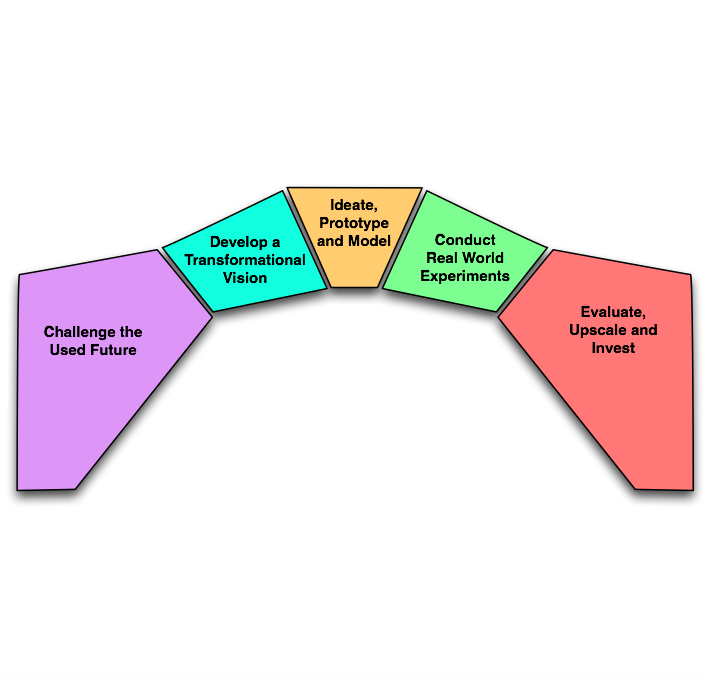Over the past year I’ve been in the process of conceptualizing a new approach to action oriented foresight. The approach is called the Anticipatory Experimentation Method (AEM), or “Bridge Method” for short.
The method provides a clear pathway to move from developing a robust and transformational vision of the future, to creating ideas, solutions and prototypes that can be implemented through real-world experiments. The method is a way of bringing the preferred future into the present through experiments that can scale.
In many ways, the method is a culmination of my 17 years working at the intersection of action research and futures studies / foresight. The method integrates a variety of different approaches that I have learned over the years, including the use of games, metaphor, visualization, role-play, reflection and modeling.
Expressions of interest
We seek expressions of interest for those who are interested in applying this method to their organizations.
Because the methodology is new, we seek to offer a significant discount to potential clients and partners, so that we can test the application of the method, refine it and build from this experience.
We would also like the application of the method to be “open-source”, so that others can learn from its application, however the terms can be negotiated. We want to focus on social impact, and are therefore seeking clients and partners who are oriented toward innovating breakthrough solutions to societal challenges.
The initial application of the method would take between 2 days in a workshop / consultation environment, with the option of further development work if needed. This 2 days can be spread out over a longer period if necessary.
This EoI will remain open for the next several month, or until we find a suitable partner of the application.
More about the Anticipatory Experimentation / Bridge Method
The AEM method entails five stages:
- Challenging the used future
- Developing a transformational futures vision
- Creating a number of prototype ideas
- Choosing which prototype ideas to experiment with and running real-world experiments
- Upscaling and investing in the experiments with the best promise
First, we challenge the “used future”, which entails exploring the assumptions and images we have about the future, as well as learning about the emerging issues, trends and weak signals that are transforming our social horizons. This is an unlearning process of challenging existing assumptions, moving past what we think we know about the future.
Secondly, we help you develop an integrated vision and support you in creating a transformational futures narrative. The transformational futures narrative articulates the movement from your past to present to preferred future. It is an open ended narrative that requires the world to participate in its fulfilment, a call to action for others to work with you to create this future.
Thirdly, we use methods such as the Futures Action Model to bridge your transformational futures narrative with ideas and prototypes. This includes an R&D process that begins with scanning the landscape of global pioneer projects, and then develops prototypes and models connected to your stakeholder ecosystem. This is done through a combination of R&D and gaming (e.g. the Futures Action Model game).
Fourthly, we set up an experiment using an action learning approach – anticipate, design, connect and evolve. The experiment is that small piece of the future you are bringing into the present. We make sure learning happens that builds in systemic capacity for renewed experiments.
Finally, experiments can be evaluated to see which ones show the most promise and are best aligned to enact your vision. These can then discarded, adjusted or upscaled and invested in to accelerate the movement toward enacting the vision.
Contact Us
For those interested in applying this method in your organisation, please get in contact with us by through our website.
For those who might think that the method could be useful for others that you know, please pass this invitation on.


